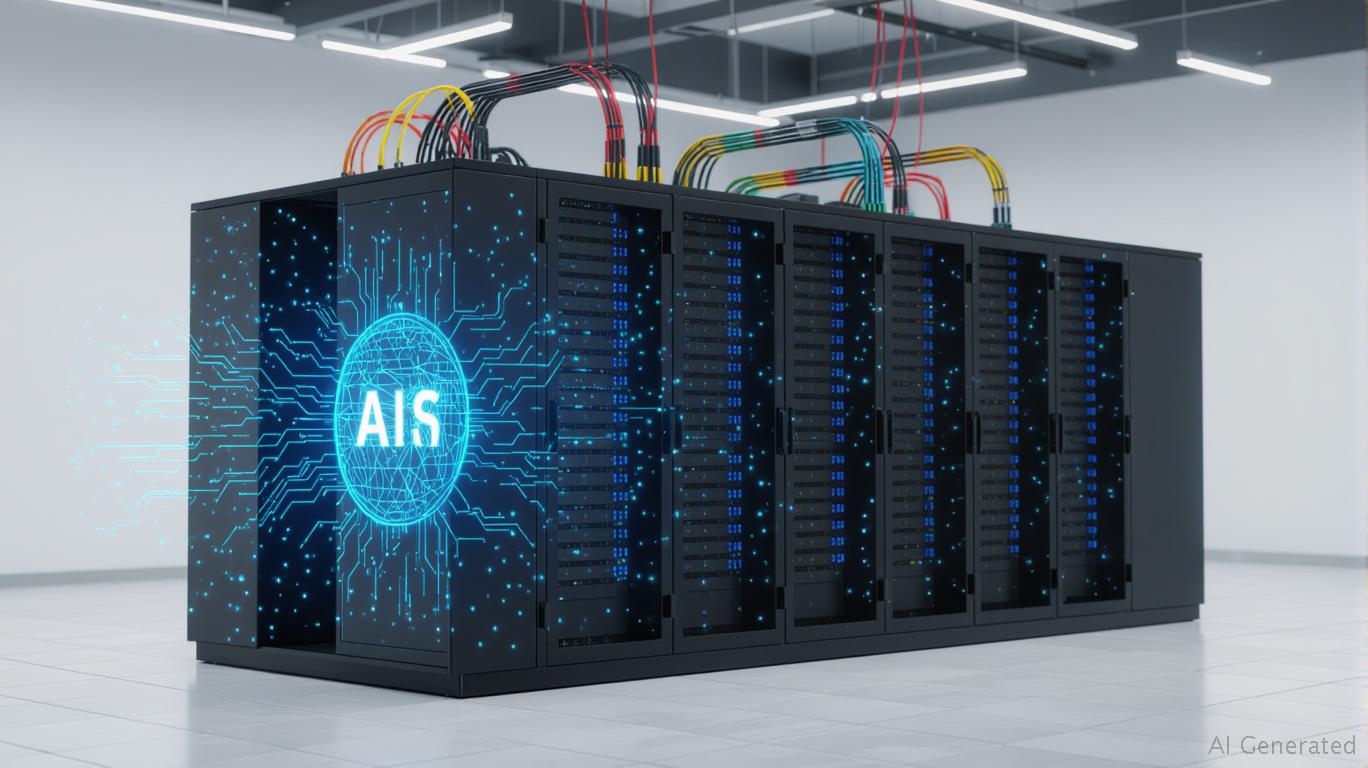Victor HaleSaturday, Jul 5, 2025 12:09 am ET
![]() 36min read
36min read
The venture capital landscape in 2025 is undergoing a transformative shift, driven by a surge in exits for artificial intelligence (AI) startups. Mergers and acquisitions (M&A) are accelerating, and the IPO market is experiencing a renaissance, with AI-driven companies at the forefront of both. Strategic allocation to startups positioned for near-term exits requires a deep understanding of the sectors, valuation drivers, and emerging trends reshaping the investment landscape. This article examines the opportunities and challenges for venture capitalists and investors seeking to capitalize on this AI exit boom.
The M&A Boom: Cybersecurity and Strategic Acquisitions
M&A activity in the AI sector has surged, fueled by corporate balance sheets flush with cash, favorable antitrust policies under the new administration, and private equity firms with $4 trillion in “dry powder” to deploy. A critical factor in these transactions is cybersecurity: startups with robust security frameworks command premium valuations, while those lacking such measures face significant discounts. In Q1 2024 alone, cybersecurity reviews in acquisition due diligence exceeded the total for all of 2023, underscoring its role as a non-negotiable criterion for acquirers.

This focus on cybersecurity is not merely a defensive measure but a strategic advantage. Founders must embed cybersecurity into their core operations early to avoid valuation penalties and secure favorable terms. Infrastructure-focused AI startups—such as those developing specialized chips, cloud services, or data centers—have emerged as prime targets for acquisitions, with mega-deals in this space reaching $73 billion in 2024 alone.
The IPO Renaissance: From Funding to Market Validation
The IPO market has rebounded strongly, with U.S. listings increasing by 38% in 2024 and proceeds rising by 48%. AI startups have been the darlings of this resurgence, accounting for nearly half of all venture capital in 2024. High-profile IPOs have centered on foundational AI models and infrastructure companies, which are positioned to capitalize on the $131.5 billion poured into AI in .
This trend is mirrored in the performance of tech giants like Microsoft, whose investments in AI infrastructure and cloud services have driven stock gains. For investors, the IPO window remains open in 2025, offering opportunities to back AI-driven companies with scalable business models and clear revenue pathways.
Sector Priorities: Infrastructure Over Applications
While consumer AI once captured headlines, investors are now prioritizing B2B solutions and infrastructure. Venture capital has shifted decisively toward AI infrastructure (e.g., chips, cloud platforms) and foundational models, with funding for these areas growing 52% year-over-year. Startups in healthcare AI, such as those developing precision medicine or digital diagnostics, and climate tech firms leveraging AI for energy optimization, are also attracting attention.
The focus on infrastructure stems from its foundational role in enabling AI adoption across industries. Companies like those pioneering AI-optimized cloud services or quantum computing integrations are particularly attractive, as they address the computational bottlenecks hindering widespread AI adoption.
Valuation Drivers: Late-Stage Momentum and Cybersecurity
Late-stage AI leaders are commanding robust valuations, while early-stage startups have stabilized after post-2021 declines. However, valuations are highly contingent on cybersecurity readiness and revenue milestones. Founders must now demonstrate $2.5 million in annual revenue at Series A—a 75% increase from 2021—to secure funding.
The premium for cybersecurity extends beyond M&A to IPO readiness. A startup's ability to protect data and systems is now a core competency, not an afterthought. This has created a clear divide: companies with scalable security protocols are positioned for premium exits, while others risk being sidelined.
Navigating Challenges: Regulatory and Revenue Realities
Despite the optimism, challenges persist. Regulatory hurdles, particularly around foreign investment in sensitive AI technologies, could complicate cross-border deals. Meanwhile, the median revenue requirement for Series A startups has surged, demanding startups prove financial traction early.
Investors must also balance short-term exit potential with long-term viability. While M&A and IPOs offer liquidity, overvaluation risks remain for startups without sustainable unit economics or defensible IP.
Strategic Allocation: Where to Focus
To capitalize on the AI exit boom, investors should prioritize:
1. Infrastructure and B2B Solutions: Startups in AI chips, cloud infrastructure, and foundational models are prime candidates for acquisitions or IPOs.
2. Cybersecurity Integration: Only back companies with baked-in cybersecurity, as this is now a dealbreaker.
3. Revenue-Driven Models: Focus on startups exceeding $2.5M in annual revenue at Series A, signaling market validation.
4. Policy-Friendly Sectors: Climate tech and healthcare AI benefit from government incentives, reducing execution risks.
Avoid overhyped consumer AI applications without clear monetization paths. Instead, seek capital-efficient startups with defensible technology and partnerships with corporate players.
Conclusion
The AI exit renaissance offers a clear roadmap for venture capital allocation. By aligning investments with infrastructure-driven opportunities, cybersecurity rigor, and policy-supported sectors, investors can capture the next wave of M&A and IPO gains. The stakes are high, but the rewards for strategic allocation are even higher in this rapidly evolving landscape.









 English (US) ·
English (US) ·